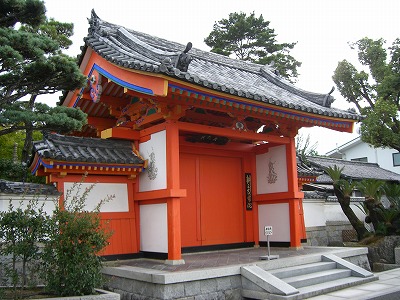
This is the gate to Choseikaku, which is a gorgeous residence dedicated to
the founder’s mother.
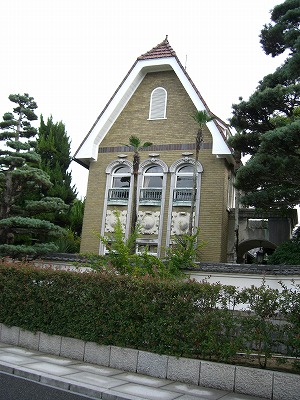
This is a part of the Choseikaku.
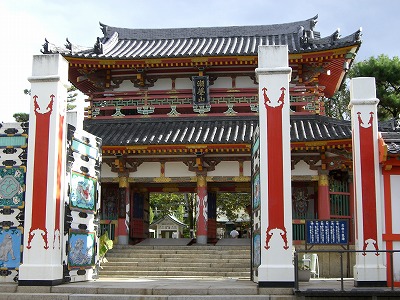
This is the main gate to Kosanji-temple.
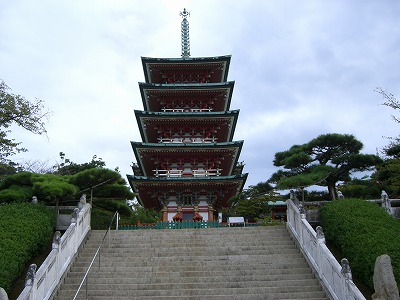
Kosanji is different from other temples on the point that the five-storied pagoda is
located in the center of the temple. A very interesting thing is on the top of the pagoda.
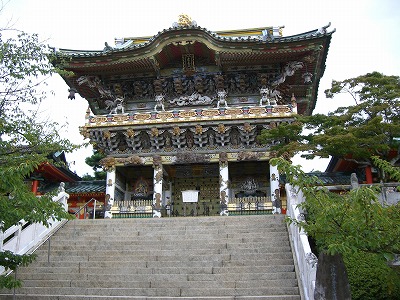
Koyo-mon, built after the Second World War, was modeled
after Yomei-mon in Nikko-Tosho-gu to the north of Tokyo.
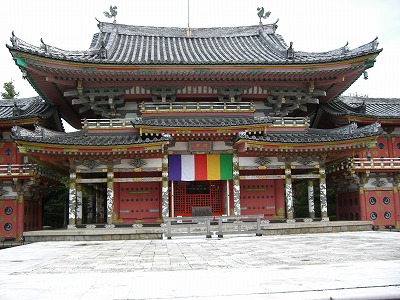
kosanji is a newly-built temple which belongs to Jodo-Shinshu sect.
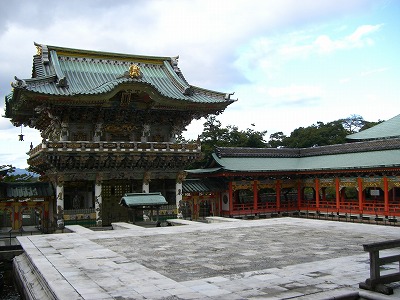
Priest kozo, once a businessman in Osaka, built this temple spending
more than 30 years.
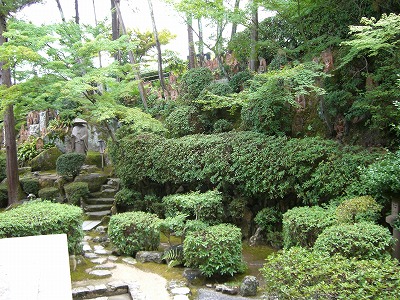
This temple itself is designated as a museum.
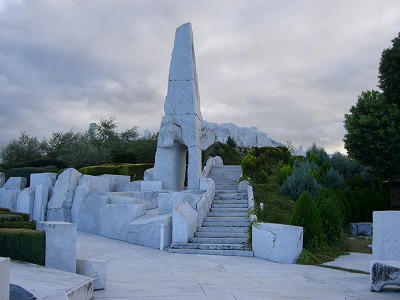
Next to the temple is a large space covered with marble and sculptures.
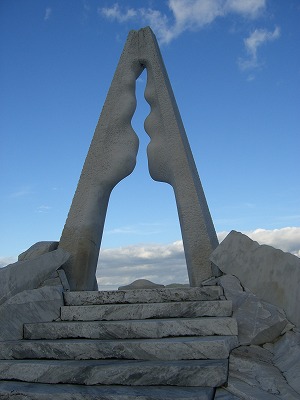
You can see a nice view of the Seto Inland Sea from the top of the hill.
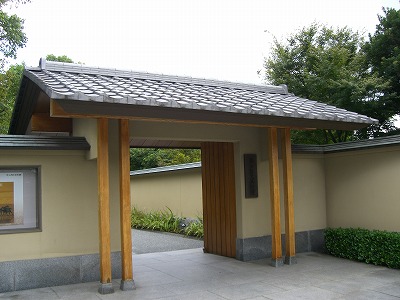
This is the main gate of Hirayama Ikuo Museum, which is located on
the Island of Ikuchi-jima in Hiroshima Prefecture.
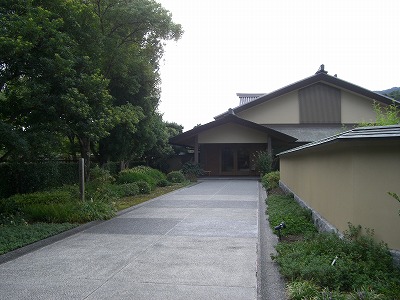
The approach to the entrance of H.I. Museum of Art
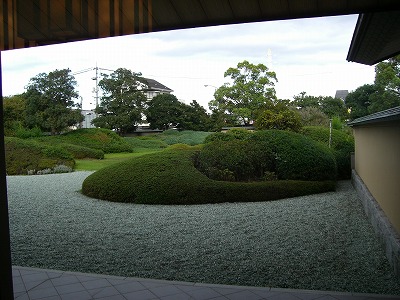
This is the japanese garden seen from the entrance hall of the museum.
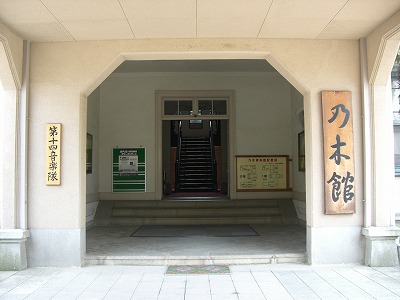
This is the entrance of the former 11th Division of the Imperial Army.
Now it is the “Nogi-kan” museum showing the period around the Russo-Japanese War.
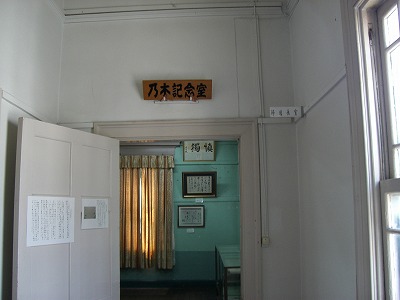
This is the entrance to the room of former commander: General Nogi.
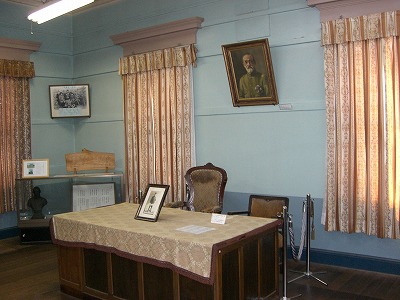
General Nogi was using the desk and the chairs in this room.
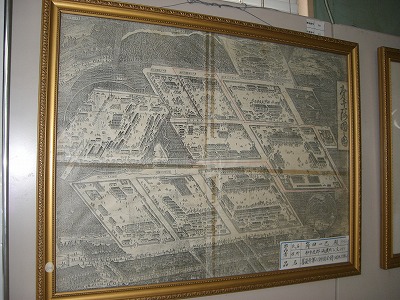
This is the old map of the former 11th division’s camp in Zentsuji.
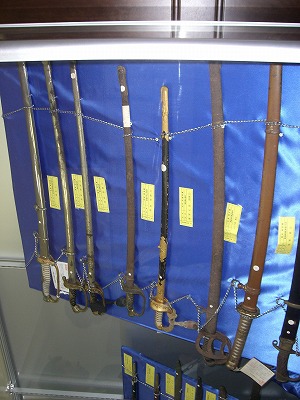
Swords used in the old days
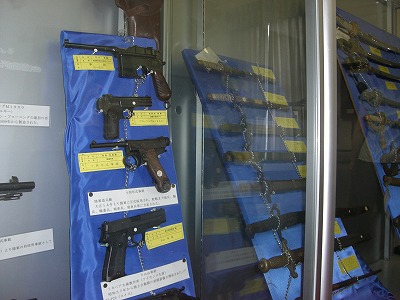
Guns in the past days
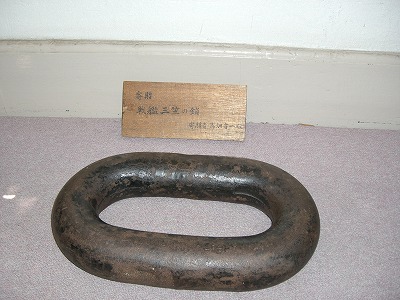
An iron link used for the anchor chain of Battleship Mikasa in the days of
the Russo-Japanese War
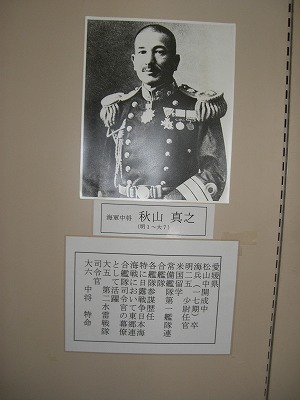
Saneyuki Akiyama, Vice-admiral of the Japanese Imperial Navy, was from Ehime.
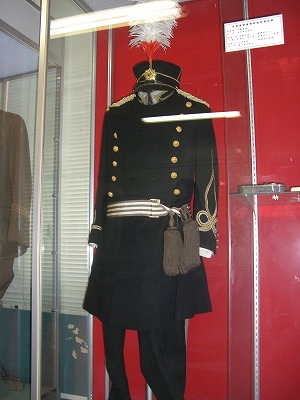
Military uniform in the old days
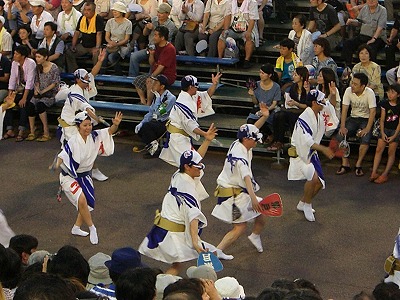
One theory says that Awa-Odori has developed from the Bon Festival Dance.
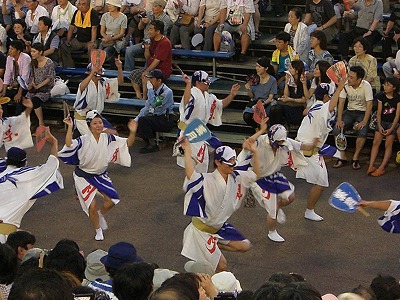
Another theory says that it grew from celebration on the completion of
Tokushima Castle.
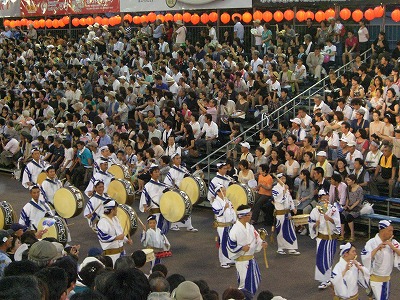
Awa-Odori is held in many cities and towns throughout the prefecture.

Dance performances are held in parks and on the main streets in Tokushima City.
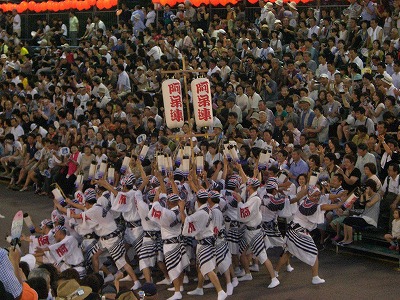
Awa-Odori is held for four days from August 12th.
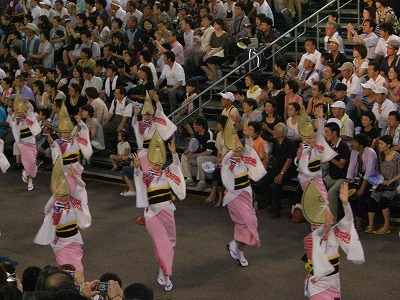
This is female dance style.
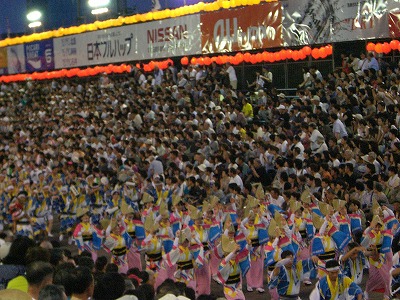
They have more than 950 dance groups.
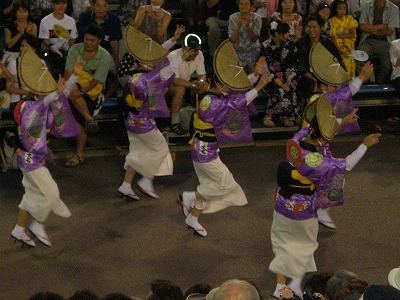
Beautiful women’s dance
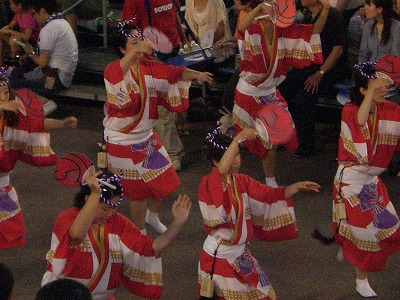
Male dance performed by women
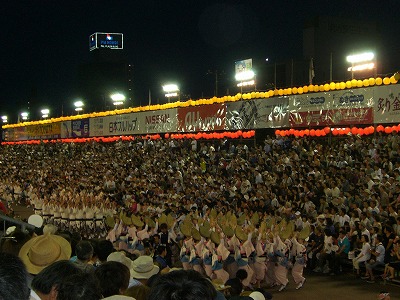
You can enjoy various styles of dancing.
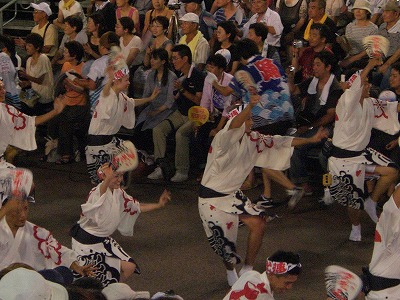
Women join the male dancers.
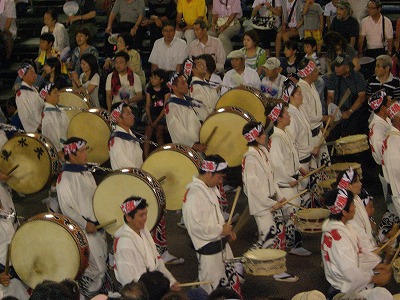
Drums are important for dancers.
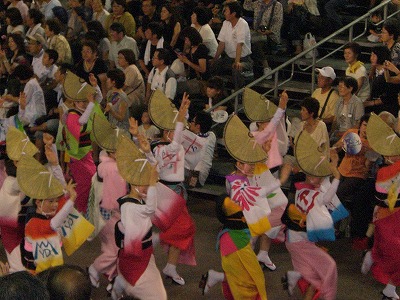
Bravo!
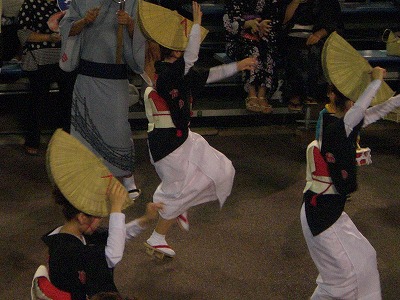
Elegant!
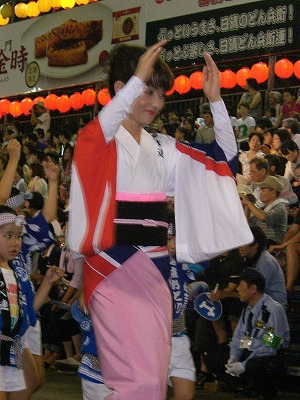
Famous actress in Japan
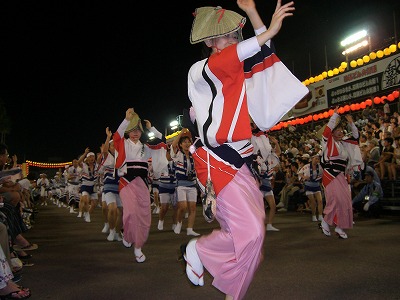
The dance continues for hours.
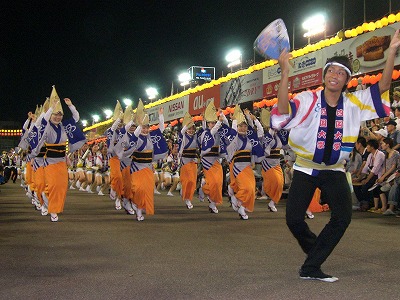
University students
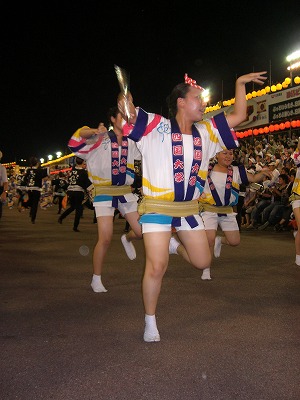
Female students
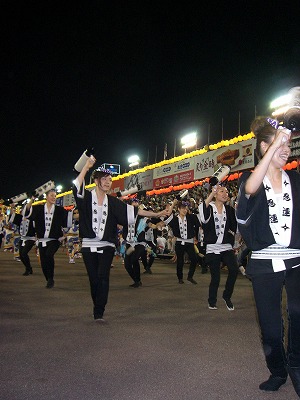
Visitors can enjoy the Awa-Odori dance.
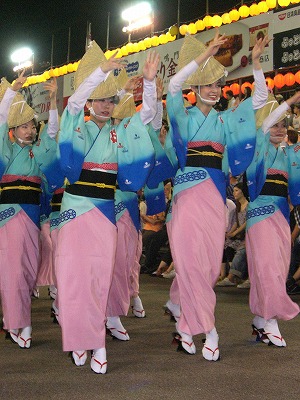
Seeing is believing.
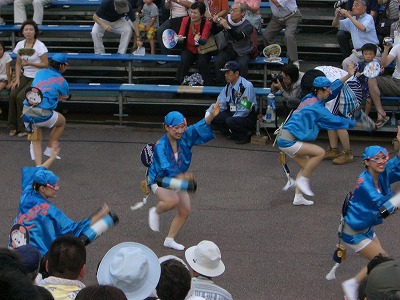
Biggest event in Tokushima is “Awa-Odori”.
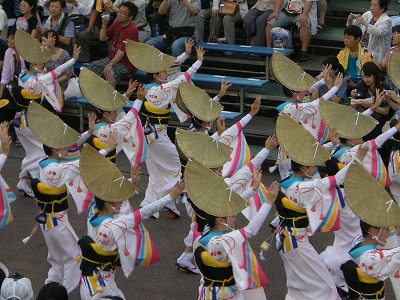
Dance troupes come after troupes.
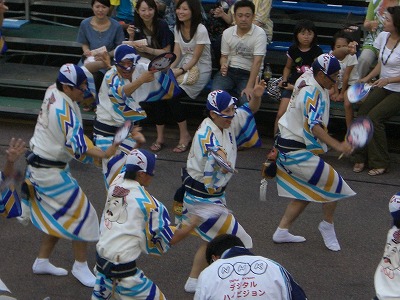
The period is from August 12th to 15th.
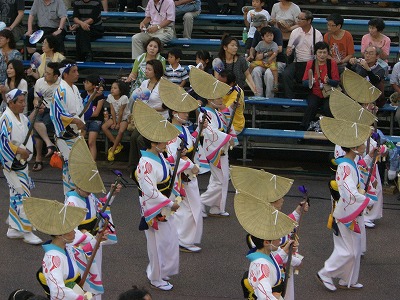
Awa Dance has a history of more than 400 years.
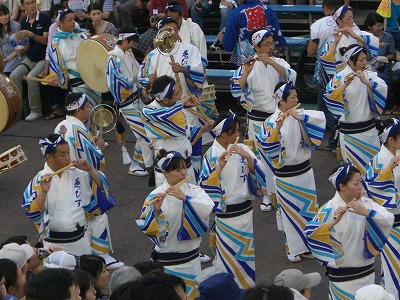
Many musical instruments such as bamboo flutes, drums, shamisen and so on
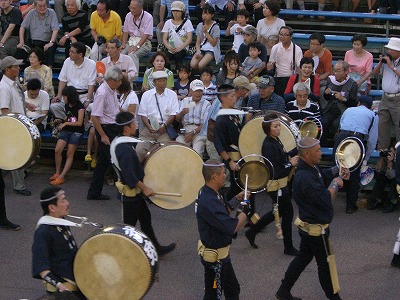
Each troupe has its own rhythm.
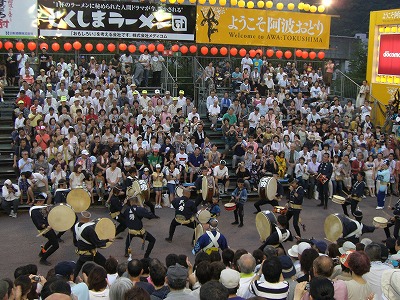
Each drummer and dancer moves and excites us.
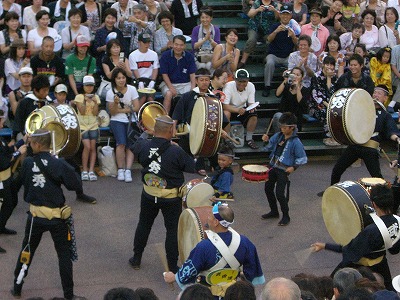
A little drummer in the middle of drummers
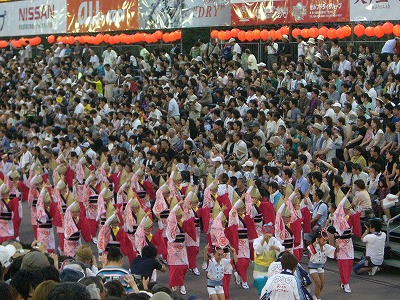
Each troupe has its own way of dancing.
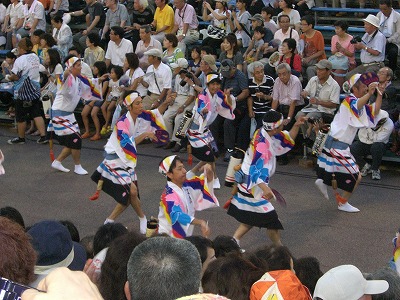
From 6 pm to 10:30 pm every night for four days
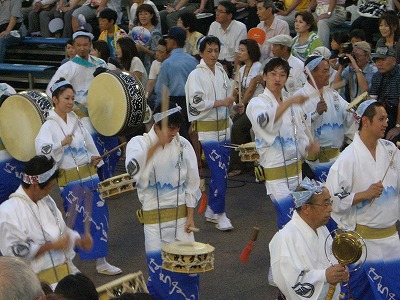
The Awa-Odori attracts me every summer.
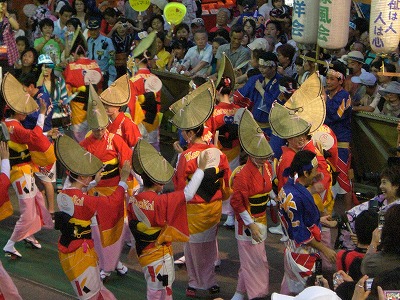
The population swells to more than 4 to 5 times as large as that of Tokushima City.
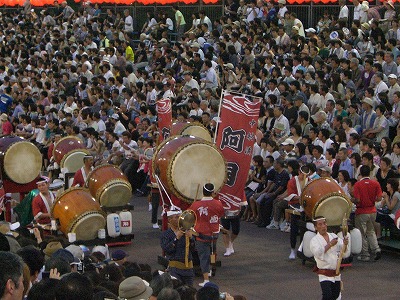
Their techniques seem to be like works of art.
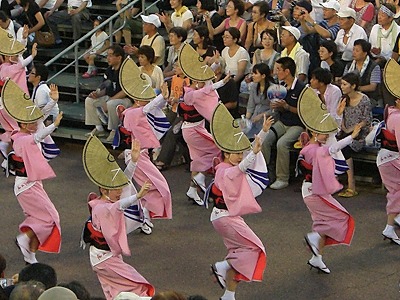
Downtown Tokushima turns to a giant dance hall.
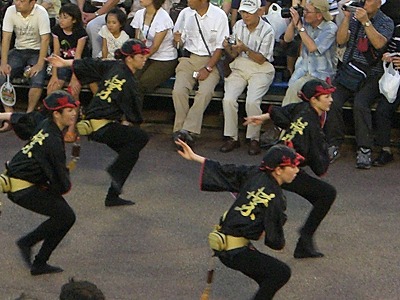
Yes, I like them.






























































